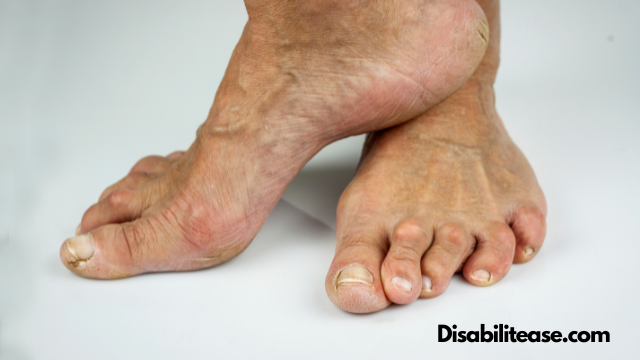What is bacterial arthritis? Bacterial Arthritis is caused when bacteria, fungus, or a form of virus enters a joint through the bloodstream.

The condition is more commonly known as Septic arthritis and is typically caused by a specific type of bacteria called Staphylococcus aureus (staph).
Infections such as a urinary tract infection, kidney infection, or even milder skin infections can cause bacteria to enter the bloodstream and cause complications within a joint. Knee joints are the most commonly affected after hips, shoulders, and spine.
We have a related article for you, you can read Can Arthritis Turn Into Bone Cancer?
Table of Contents
Causes – What Is Bacterial Arthritis
Every joint in our body is protected by a thin layer of tissue that acts as a cushion against the joining bones grinding together. This protective layer has low immunity against most infections and therefore doesn’t attack the bacteria in most cases.
Our body compensates for this inability by reacting against the bacteria in the form of inflammation. This inflammation, in turn, causes reduced blood flow around the joints, leading to swelling, pain, tenderness, and reduced range of motion. The condition is also accompanied by extreme discomfort during movement, red skin around the joints, and mild fever.
While Infections entering the bloodstream are the most common cause of Bacterial Arthritis, it can also happen under many other conditions. These are explained below:
Drug Injection
Healthy people with no signs of infection can also become affected if bacteria find an intravenous way to enter the bloodstream.
Puncture Wound
An untreated wound becomes the breeding ground of bacteria and can provide it a path to reach the joint. Bacterial Arthritis is more likely if the injury takes place nearby the joint.
Surgery
Some forms of surgery can make way for bacteria to enter the bloodstream. The risk is higher in cases of joint-related surgery such as knee replacement.
Implants
Prosthetic joints are more prone to bacterial infections than natural joints. Simple complications such as a skin infection, pneumonia, and urinary tract infection can reach the artificial joint. Other than this, bacteria can also enter the bloodstream directly during the operation due to contamination.
Diagnosis
Below are some of the common tests used to detect bacterial Arthritis:
Fluid Aspiration: A sample of the fluid is taken from the affected joint to check for the presence of bacteria.
Blood Test: A blood test is typically carried out to detect any immune system reaction against the infection. The test also helps rule out the possibilities of any other underlying condition causing the problem.
X–Rays: An in-depth view of the bones within the joints can highlight the signs common in cases of bacterial Arthritis. Signs such as any widened joint spaces or gathering of soft tissues can be immediately detected under X-rays.
Ultrasound: An ultrasound is usually used to assess the severity of the condition rather than its detection. It is also used to locate the joint fluid during the fluid aspiration process.
Treatments
Compared to other types of Arthritis, bacterial Arthritis is usually short-lived, especially when early treatment is sought. In most cases, antibiotics and fluid drainage can improve the symptoms within 48 hours.
Once treated, it does not leave any permanent damage to the joints, and mild physical therapy can bring back the lost flexibility. The time to recovery can still vary with the specific complications and severity of the disease, some cases of excessive infection may require intense therapy and IV antibiotics for up to 4 weeks.
Antibiotics
While surgery and more invasive treatments may be necessary in some cases, antibiotics are the most important measure to control the disease and prevent progress. Depending on the cause of one’s Arthritis, antibiotics may be given as a pill or intravenously.
Surgery
In cases of deeply embedded bacterial infection, the affected and inflamed tissues are removed from the joints. Depending on the severity, the treatment may need one or multiple surgeries over time. The need for surgery is more common in cases of shoulder or hip Arthritis compared to knees.
Fluid Drainage
Over time, the bacteria accumulate within the fluid surrounding a joint. This infected fluid is drained over multiple sessions using a fine needle. However, this is more common in cases of fungal rather than bacterial infections.
Implant Removal
If the Arthritis is caused due to infection within a prosthetic joint, it will likely need to be removed and replaced. In most cases, a joint spacer is used instead of a new prosthetic to allow time for recovery.
Joint spacers are a popular choice to prevent further damage to the joint as they are made with antibiotic cement that helps maintain normal joint function. This is not permanent and usually gets replaced with a new prosthetic after several months of recovery.
Physical Therapy
Many individuals struggle to engage their affected joints properly despite their full recovery. In such a case, short-term physical therapy may be needed to bring back a wider range of motion. It also helps with maintaining muscle health as Arthritis can cause thinning of the muscles surrounding the affected joints.
It’s important to remember that, as with any other bacterial infection, the condition can worsen rapidly if not managed immediately.
The complications can become uncontrollable if not treated within the first 24 hours. While a relatively mild condition, it can cause irreversible cartilage and bone damage.
Risk Factors
Existing Rheumatoid Arthritis
Rheumatoid Arthritis is an autoimmune disease and requires intensive medication to suppress the immune system. This can result in more freedom for bacteria to accumulate and thrive without encountering a natural reaction against it.
Compromised Immune System
People with an overall weaker immune system have a low ability to fight both viral and bacterial infections. Those with diabetes, lung, and kidney problems are therefore more prone to developing bacterial Arthritis.
Age
The population at most risk for developing bacterial Arthritis includes infants and older individuals due to their weaker immune systems.
Also, make sure to check out my post on 10 Adaptive Equipment for Arthritis Hands.
Unhealthy Lifestyle
Unhealthy habits such as drinking too frequently, smoking, and poor diet can lower one’s ability to fight bacterial infections.

Hi, my name is Eddie, I am a professional trainer specializing in the elderly population and I’m also a website designer. I love training in the gym, going to the beach, traveling, and having good food.
I combined my love for sport and website designing to make “DisabilitEase” whose purpose is to help elderly and disabled people live a more full and active life, have more fun, and enjoy their unique journey despite any disability.



